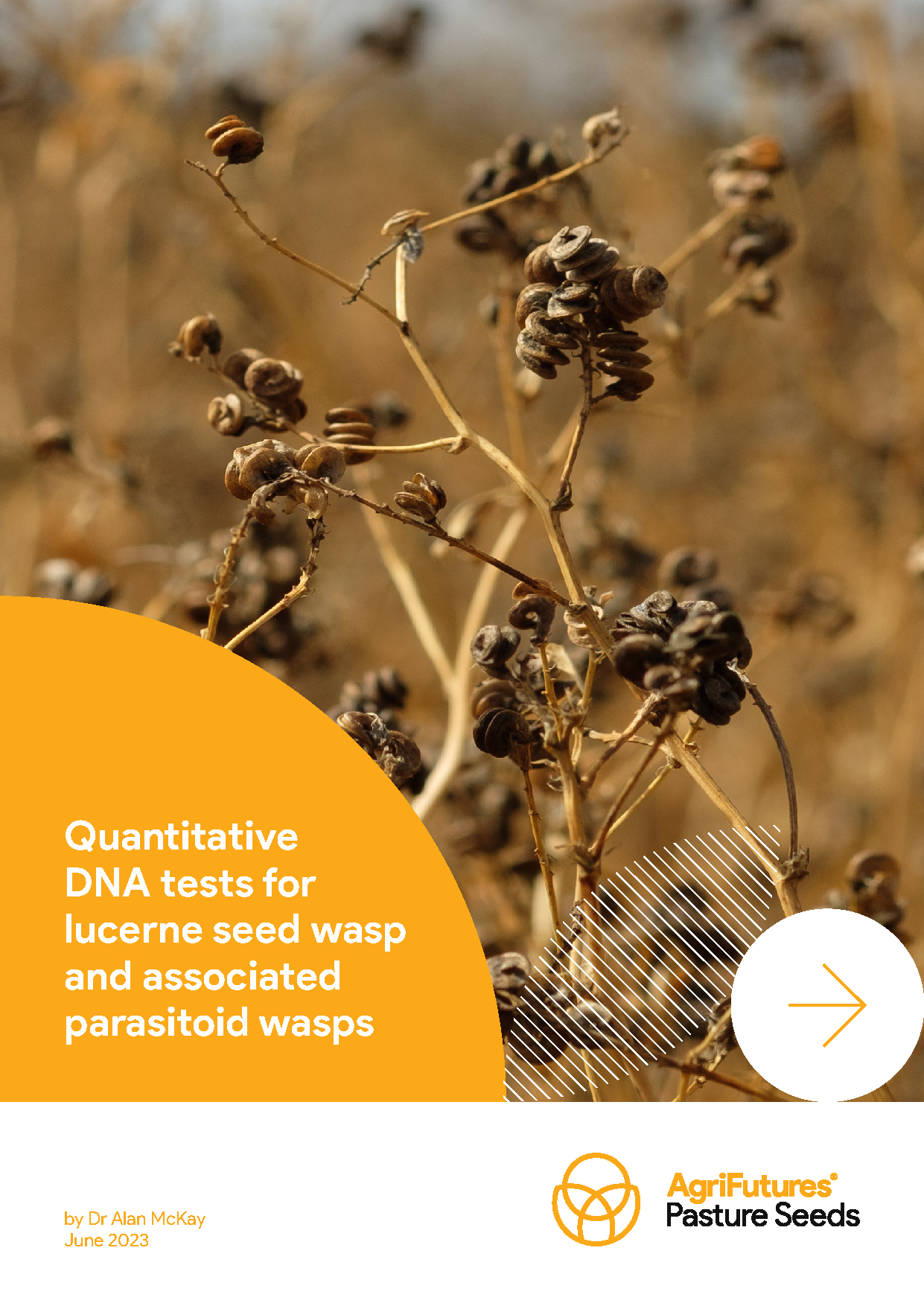This report summarises the development of DNA tests for lucerne seed wasp (LSW), Bruchophagus roddi, and two associated parasitoid wasps, Idiomacromerus perplexus and Pteromalus sequester, to support integrated pest management (IPM) systems for the Australian lucerne seed industry, an industry worth about $100 million per annum.
Lucerne seed wasp is a serious pest of lucerne seed production. This project estimates the wasps delivered in uncleaned lucerne seed to the cleaning shed cost growers more than $32 million over the six years from 2018 to 2023. Actual losses will have been greater as this figure does not include seed losses associated with the wasps that passed through the header or hatched before harvest.
Lucerne wasp reproduces in developing lucerne seed, and to a lesser extent in annual medic and clover seed. One wasp can lay eggs in multiple seeds and can complete several generations when crops flower over an extended period. There are two main parasitoid wasps of LSW – I. perplexus and P. sequester. Both seek out seeds infested by LSW to lay their eggs, and the parasitoid larvae feed on the LSW larvae. While the infested seed is lost, high parasitoid populations reduce the ability of LSW to reproduce in later crops.
Key achievements of the project include:
(1) Sensitive high-throughput tests were developed for LSW and two parasitoid wasps to assess seed, soil and air trap samples.
(2) The tests were used to assess LSW and parasitoid wasp numbers in 4,097 delivery samples collected between 2018 and 2023. With industry support, results of 49% of the samples were mapped, revealing substantial spatial variation in levels across districts and between seasons.
(3) Results show that in most years, levels of infestation were greater in seed crops harvested later, confirming the findings of previous research. Parasitoid wasps as a proportion of total wasps increased with day of delivery, a proxy for harvest date, and varied greatly between years. Total infestations also increased with latitude in the South East region of South Australia, and in flood and pivot-irrigated crops compared to dryland crops. Some varieties may vary in susceptibility to LSW; more detailed studies are needed to confirm this.
(4) Wasp populations in soil declined slowly over winter and the rate of decline was not affected significantly by irrigation method and year.
(5) A system to report results to growers has been established to assist identification of high-risk crops and to monitor the effects of management practices across years.





